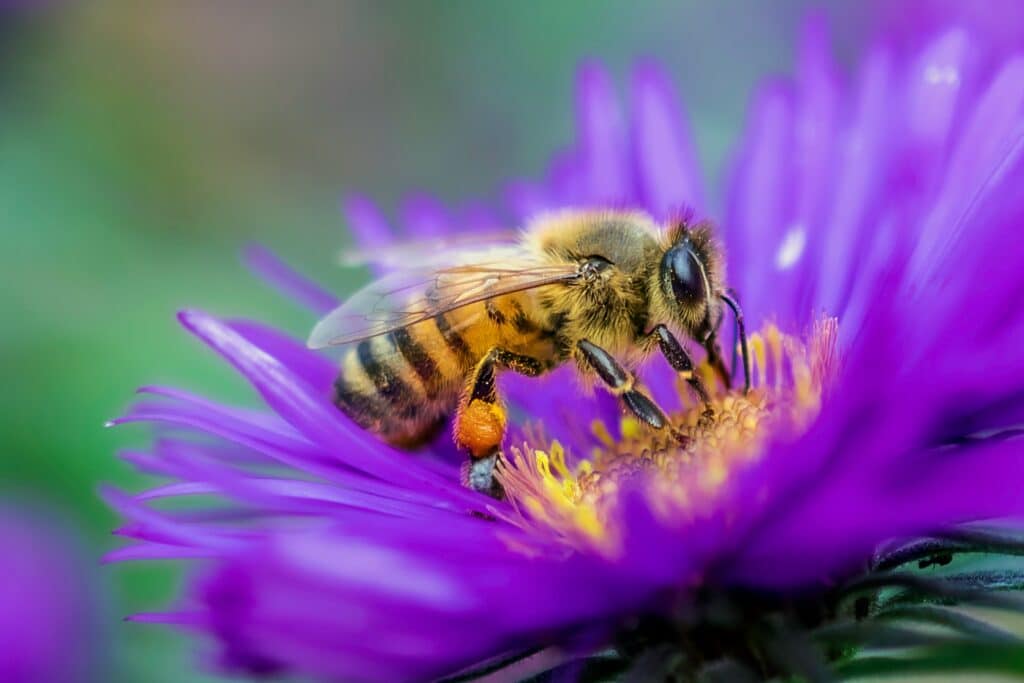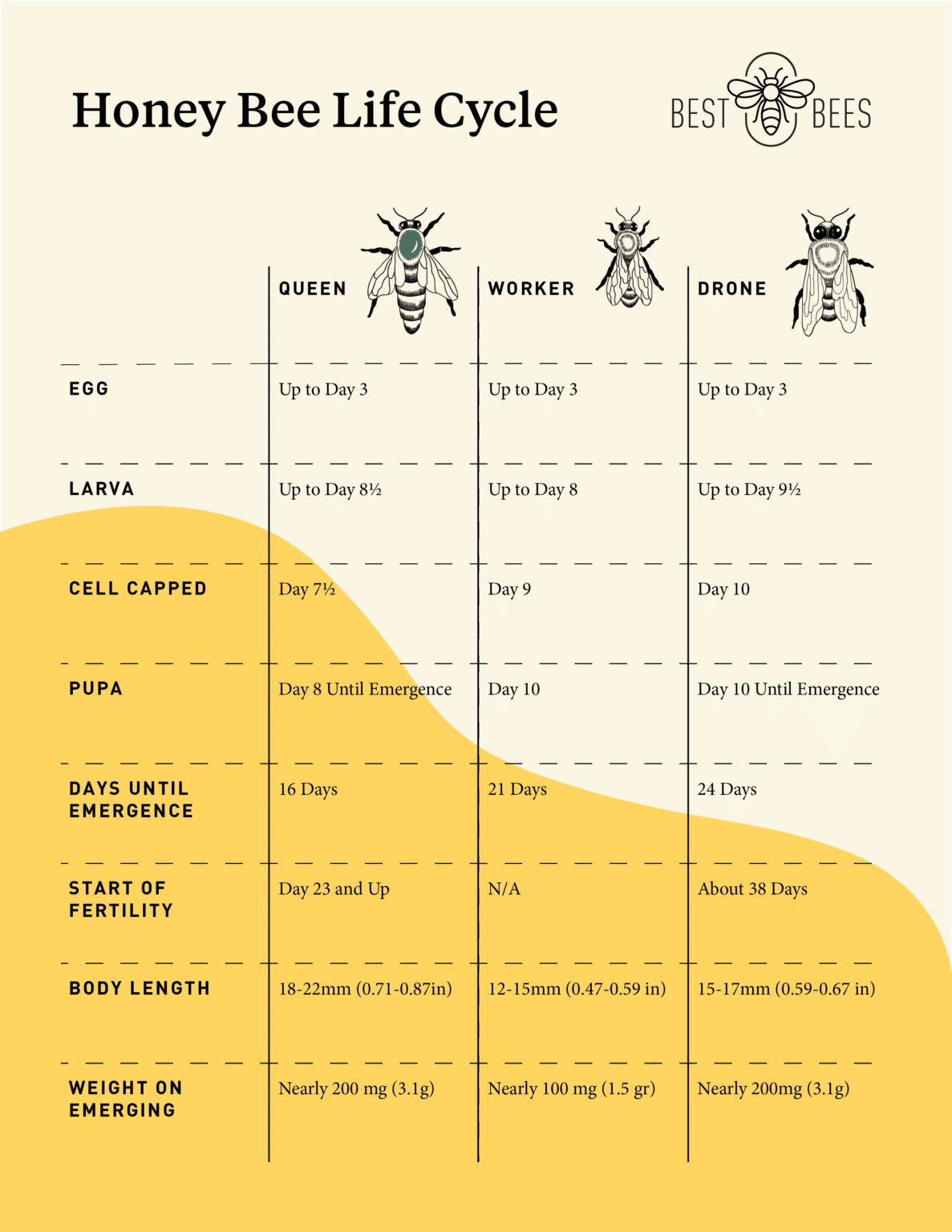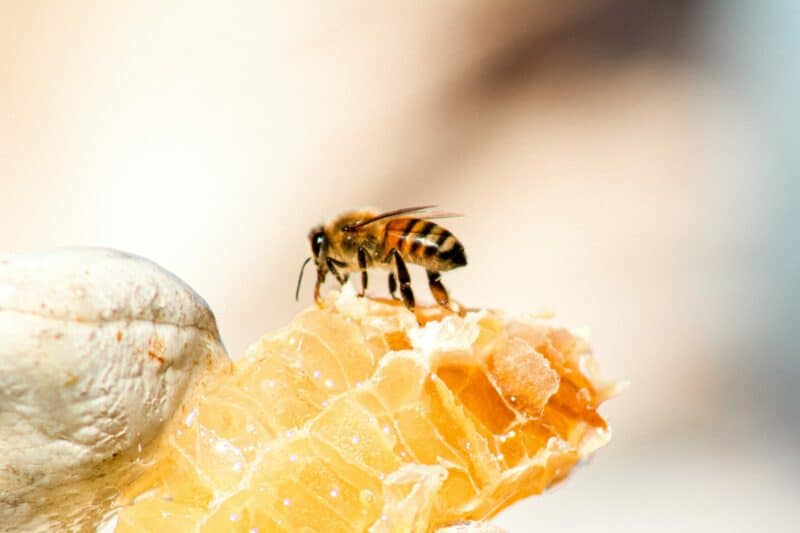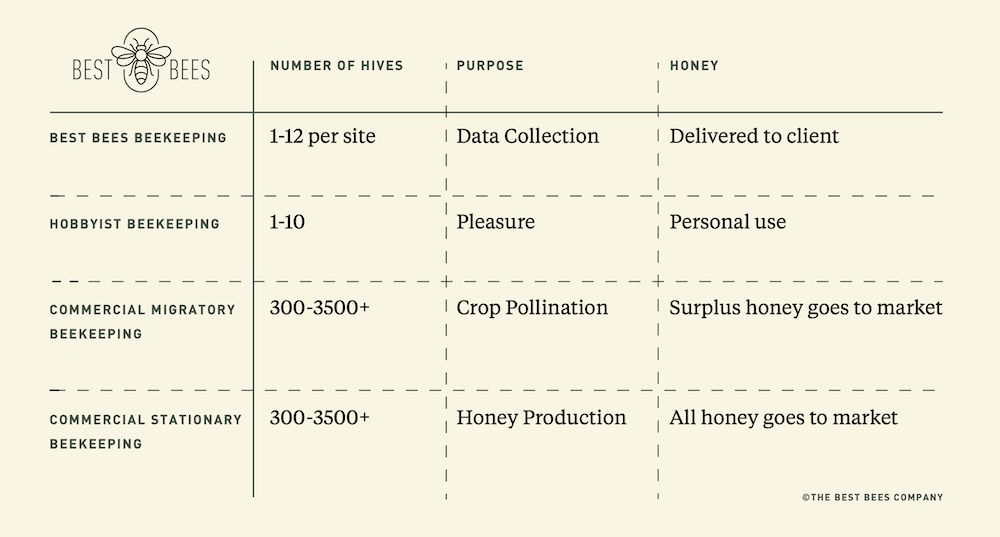Contents:
About the Bee Lifecycle
Bees are an incredibly diverse species and there are an estimated 20,000 species of bees present today. In this blog, we will provide you with a closer look at the entire lifecycle of the Italian honey bee (Apis mellifera liguistica).
Although the Italian honey bees share the same lifecycle stages, it is important to note that the lifecycle of each honey bee is dependent on the time of year and its role within the colony.
The 4 Stages of the Honey Bee Lifecycle
The lifecycle of an Italian honey bee is broken out into four distinct stages: egg, larva, pupa, and adult and it is dependent on the role that this bee has within the colony. According to CarolinaHoneyBees.com, the average life expectancy for a queen bee is 2-3 years, while worker bees can live from six weeks to six months (depending on the season), and drones will live until they are done mating (on average, two months).
The Egg Stage
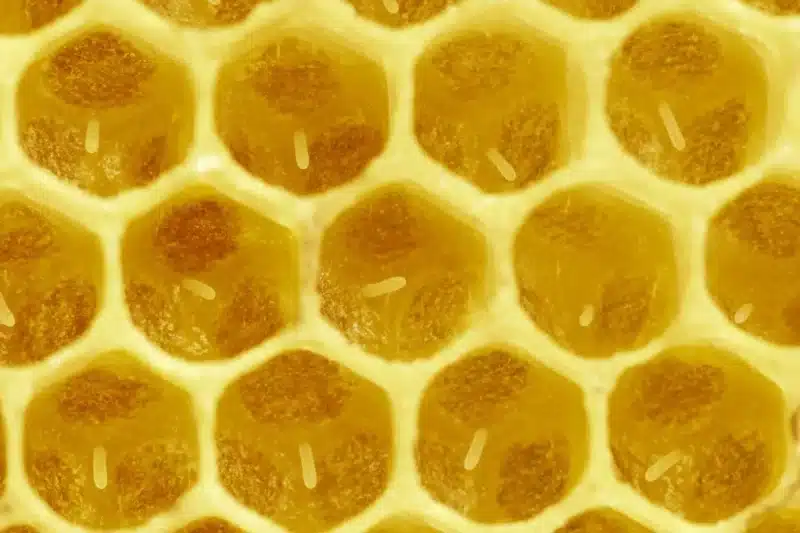
The entire cycle of a honey bee’s life begins in the egg stage, which occurs once a queen has mated with a male (drone) from another hive and lays the fertilized eggs into cells within the hive. Throughout most of her life, the queen bee stays in the hive laying eggs; however, five to eight days after hatching, the young queen will make one to three mating flights. According to Keepingbackyardbees.com, during these flights, a young queen will fly up to nine miles to find a waiting swarm of drones from neighboring colonies. They will then compete to mate with her in midair.
According to Emily O’Neil, staff scientist at The Best Bees Company, the queen bee will typically mate with 10-20 drones over the course of her mating flights.
“You want a queen to mate with more drones so that there is more genetic variability and the sperm is more viable,” O’Neil said.
The sperm she gets from this one flight from the 10-20 drones will last her for the rest of her life — the spermatheca, a specialized internal organ, will store the sperm so she can continue to lay eggs for as long as she is the queen of the colony.
Once the eggs have been fertilized, the queen will begin laying eggs inside the hexagonal cells of the comb. Fertilized eggs turn into worker and queen bees. To create drones, either the queen or a worker bee can lay an egg, because a drone bee egg is unfertilized. Interestingly, because they get all their genetic makeup from the queen or worker who laid them, drone bees have no father, but they do have a grandfather — the drone bee that fertilized the egg of their mother.
Queen bees can lay up to 3,000 eggs per day. During this time, an egg inside a cell will look like a white grain of rice standing straight up. The pattern in which the queen lays the eggs is called the brood pattern, and it is an important indicator of the health of the queen.
The eggs should be laid next to each other, uniformly moving from the center of the frame to the outside edges. If this is the case, most cells will be occupied by young of the same developmental stage — eggs close to other eggs, larva of the same age close together, etc. A few empty cells are normal, but too many holes in the pattern may indicate that something is wrong; this is why it’s important to keep checking in on the colony’s brood pattern.
The egg stage lasts only three days, regardless of the type of bee the egg will develop into.
“Whether it be a drone, a worker, or even a queen bee, everything begins as an egg,” Nathan Reid, Head Beekeeper at The Best Bees Company, said.
The Larva Stage
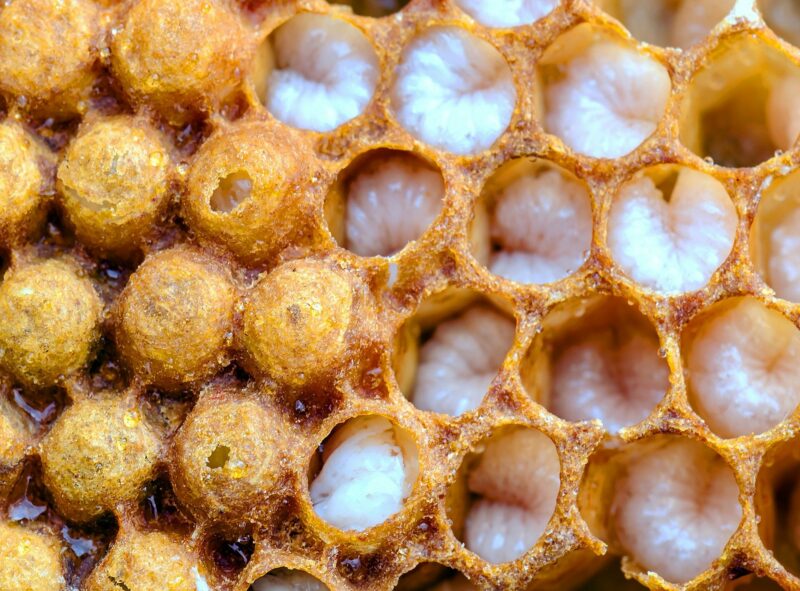
The larva stage occurs immediately after the egg stage, once the egg has developed into a white, worm-like form called the larva.
“After three days, the egg has hatched and even though you could barely tell, the larva looks like the letter C. During this time, the larva has more of a soft shell, and it will be fed royal jelly by nurse bees, which are bees that have recently emerged from cells,” Reid said.
Royal jelly is a milky secretion produced by the worker bees in a honey bee hive, and it contains a combination of water, proteins, sugar, fats, vitamins, and amino acids. This protein-rich substance is then fed to the larva, whether it be a new queen, a worker, or a drone. Once the egg hatches and turns into c-shaped larva and is fed royal jelly, its body will begin convulsing for up to two days as it consumes this nutritional substance. Workers and drone larvae are only fed royal jelly for three days, after which they will be fed bee bread, a nutritious mix of pollen, nectar, honey, and bee saliva. Developing queens, on the other hand, are fed royal jelly throughout their entire development until they are capped.
Developing larvae, worker, drone, or queen, will have their cells sealed, or “capped over,” with wax on their sixth day of being larvae, which is the ninth day of their total development. While their cells are capped, they will turn into pupae, which brings us to the next stage.
The Pupa Stage
The pupa stage is the final stage before a developed bee will emerge from the cell, and this occurs once the larva has been capped over on the ninth day of the life cycle. During the pupa stage, the larva will be sealed inside the cell, but the duration of time they remain in their capped cell depends upon what role they will fulfill in the hive. Queen bees pupate (transform from a larva to a pupa) for seven days, worker bees for 12 days, and drone bees take 15 days.
The pupa stage is also when a recognizable bee takes form, and when the wings, head, thorax, and abdomen will develop. (BuzzAboutBees.Net)
The Adult Stage
As soon as the bee chews through the cap on their cell and emerges, its wings will still be hardening. This young bee will need to be fed by other workers for a couple of days until it is strong enough to join the colony.
After these three weeks from egg to emergence, the bee will perform a variety of duties depending on its role. As a recap, there are three types of honey bees within a beehive – queens, drones, and worker bees – and each has a specific role to play within the colony.
Queen bees are responsible for laying eggs, regulating hive activity, and swarming, while drones’s sole purpose is to mate with virgin queens outside the hive. Worker bees, on the other hand, play more than a dozen specialized roles inside and outside the hive, from cleaning to honey producing, to foraging.
Calculating the Age of a Honey Bee
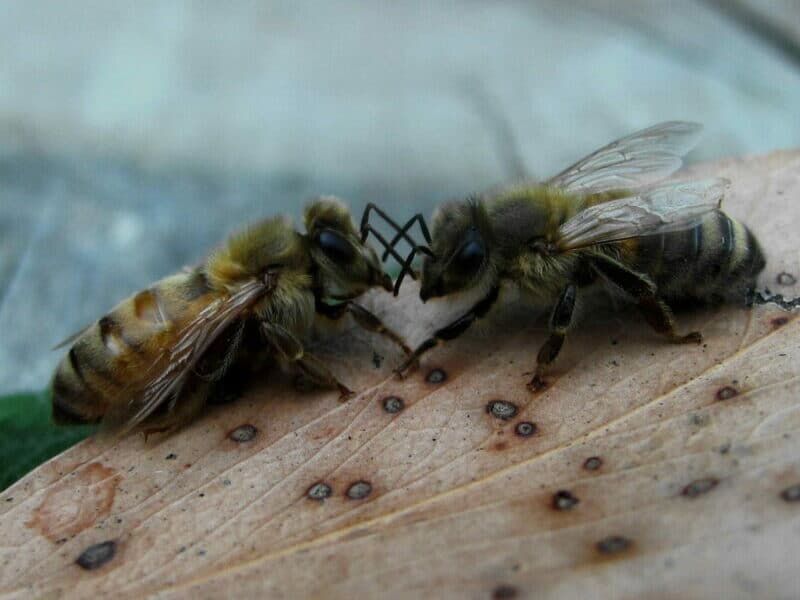
One of the major things that makes the honey bee a fantastic pollinator is the branched hairs that come off its body, which allows pollen grains to attach to the hairs and leads to cross-pollination. This characteristic also helps beekeepers understand how old a honey bee is. According to Nathan Reid, new bees emerge with a full head of fuzzy and matted hair, and over time, those hairs start to deteriorate.
By looking at a honey bee and observing its body, you will be able to see if it’s a young bee, or an older bee (or one with a disease). The shinier its body is, the longer this honey bee has been alive. It is also possible to determine the average age for a honey bee by viewing the condition of its wings, as they typically become more tattered as a bee nears the end of its life.
End of Life
Similar to the pupa stage of the honey bee lifecycle, the end of its life depends on its role within the hive. According to Nathan Reid, worker bees will typically fly so much that their wings begin to tatter and will do so until they are no longer efficient. This can mean that sometimes a bee will fly out of the hive and never make its way back, or it might die inside the hive, at which point another bee will carry its body outside the hive.
“The common phrase is that honey bees will work themselves to death, and that’s what makes them so social. They put the entire colony’s needs above their own, every time.”
The most common way for a queen bee to die, according to Nathan, is that they could enter the wrong hive. If this occurs, worker bees have a non-violent but lethal way of getting rid of her called “balling.” The worker bees inside the hive will swarm around that unwanted queen, encasing her in a tightly clustered ball. The heat from their bodies will essentially cook the unwanted queen — she overheats and dies within the mob of worker bees.
Drone bees live with only one purpose, and that is to mate with a queen. Once this occurs, the drone will die immediately after, because his abdominal tissues are ripped from his body during the mating process, according to SmithsonianMag.com. If a drone did not successfully mate with a queen, and returns to his hive unscathed, he is still not long for this world. In the fall, when foraging becomes scarce, drones become just another mouth to feed, but without contributing to the hive. Therefore, worker bees kick drones out of the hive. Once they are booted from the hive, drones either die of starvation or hypothermia.
Video of Honey Bee lifecycle
FAQs
Q: How long do honey bees live?
A: The lifespan of a honey bee is entirely dependent on its role within a hive and the time of year. During spring or summer, a worker bee will live to about six weeks, while a bee that is prepped and ready for winter can live for four to six months.
Q: How can you tell how old a honeybee is?
A: You can tell how old a honey bee is by viewing the hairs on its body. Young bees will typically be covered in fuzzy fur, and as they age, the hair will be removed, leaving behind a shinier body.
Q: How long does a honeybee colony live?
A: Honey bees, depending on their role within the hive, will have different lifespans. A queen bee can live up to 3-4 years, while a worker bee will live up to six weeks during the summer. A drone will die shortly after mating, but can live for several months if it has not done so.
These are average life expectancies and are subject to change based on weather, pesticides, and even varroa mite infestations.


